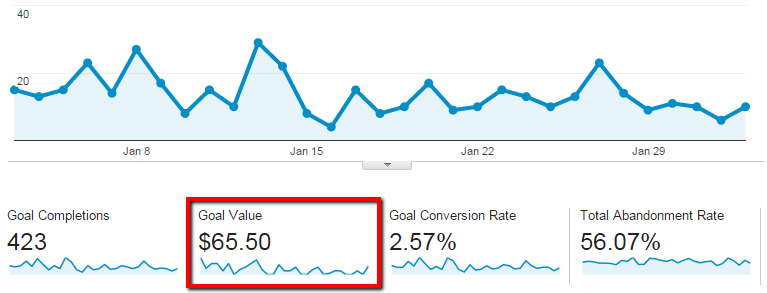Exploring What Data Is Google Analytics Goals Unable to Track
Exploring What Data Is Google Analytics Goals Unable to Track
Blog Article
Introducing the Blind Spots: Recognizing What Google Analytics Goals Can not Gauge
In the realm of electronic analytics, Google Analytics stands as a powerful tool for monitoring and assessing on the internet individual interactions. Recognizing what Google Analytics objectives can not determine is important for obtaining a detailed sight of individual actions and engagement.
Individual Behavior on External Platforms
Recognizing exactly how customers interact on outside platforms is essential for maximizing online methods. External systems, such as social media sites networks, reference web sites, and on-line discussion forums, play a considerable duty in driving traffic to a company's site. By analyzing customer habits on these systems, organizations can gain important insights into the performance of their advertising and marketing initiatives and the preferences of their target market.
One secret element of user habits on exterior systems is the referral resource. By tracking where the users are originating from, businesses can determine which systems are driving one of the most traffic to their site. This info can assist firms allot their resources better, concentrating on the platforms that generate the best results.

Offline Conversions and Communications
Analyzing customer habits on external systems offers beneficial insights into on-line methods; however, considering offline conversions and communications is equally vital for a detailed understanding of a company's total performance. Offline conversions, such as in-store acquisitions or phone inquiries, play a substantial function in many organizations' success.

Acknowledgment Beyond Last Click
When diving into the realm of digital advertising analytics, it comes to be important to look past the solitary touchpoint of the last click for a much more comprehensive understanding of attribution. While Google Analytics offers useful understandings right into customer actions, relying exclusively on last-click attribution can be limiting - what data is google analytics goals unable to track. Acknowledgment models that surpass the last click supply a much more nuanced sight of the consumer trip, thinking about all the touchpoints that bring about a conversion
Acknowledgment past the last click permits marketers to assign credit rating to different interactions along the conversion path, giving a more clear image of the efficiency of different marketing networks. By exploring multi-touch acknowledgment designs such as linear, time degeneration, or position-based acknowledgment, companies can better allot their advertising and marketing spending plans and enhance their techniques for optimal effect.
Comprehending the impact of each touchpoint in the conversion procedure is vital for making educated decisions and taking full advantage of ROI. By accepting acknowledgment past the last click, services can acquire much deeper insights right into customer actions and tailor their marketing efforts better.
Cross-Device and Cross-Browser Monitoring

In a similar way, cross-browser monitoring enhances cross-device tracking by capturing individual habits as they change see this here in between various internet internet browsers. Comprehending exactly how individuals connect with internet sites on various browsers can help marketing experts optimize their online experiences to guarantee consistency and functionality throughout various systems.
Qualitative Information and Customer Intent
Understanding customer intent via qualitative information evaluation is essential for developing targeted digital marketing methods that resonate with the needs and choices of the target market. Qualitative information supplies insights into the 'why' behind customer actions, shedding light on inspirations, feelings, and choices that quantitative data alone can not record. By assessing customer responses, remarks, and interactions, marketing professionals can discover valuable details concerning individual intent, allowing them to tailor their messaging, material, and offerings to much better align with what their audience is looking for.
Qualitative information likewise helps in recognizing the context in which individuals involve with an internet site or app. This contextual understanding allows marketing experts to develop even more pertinent and individualized experiences, inevitably driving higher involvement and conversion rates. By delving right into user intent via qualitative information analysis, organizations can get a much deeper understanding of their target market, leading to extra efficient marketing methods that meet individuals' needs and assumptions.
Verdict
Finally, Google Analytics objectives have limitations in gauging user habits on exterior systems, offline conversions, attribution beyond last click, cross-device and cross-browser monitoring, and qualitative data connected to individual intent. what data is google analytics goals unable to track. It is necessary for organizations to be conscious of these dead spots in order to supplement their information analysis with other devices and methods to obtain a more comprehensive understanding of their target market and improve their total electronic advertising strategies
By assessing customer habits on these systems, companies can gain beneficial insights into the performance of their advertising and marketing initiatives and the preferences of their target audience.
Evaluating user behavior on external platforms gives beneficial insights into on the internet approaches; however, taking into consideration offline conversions and communications is similarly imperative for an extensive visit their website understanding of a business's general performance.In digital advertising analytics, moving beyond last-click attribution to explore cross-device and cross-browser tracking is necessary for obtaining an all natural understanding of customer communications throughout numerous systems and tools. click here for more info By examining customer responses, comments, and interactions, online marketers can uncover useful details about user intent, allowing them to tailor their messaging, web content, and offerings to much better straighten with what their audience is looking for.
By diving right into individual intent through qualitative data analysis, organizations can acquire a much deeper understanding of their target audience, leading to much more effective advertising and marketing approaches that satisfy individuals' expectations and requirements.
Report this page